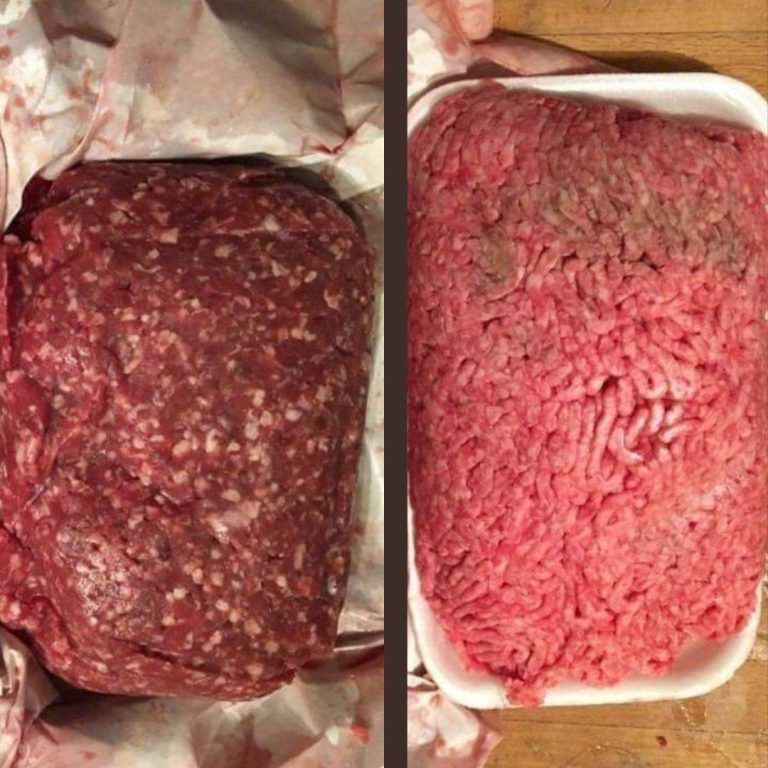ADVERTISEMENT
2. Taste and Texture
Store-Bought Beef: Due to the mass production processes, store-bought beef can sometimes lack the depth of flavor that fresh, local beef offers. The texture can also be more uniform, with less of the robust marbling that gives beef its signature juiciness.
Farm-Fresh Beef: The superior marbling and natural feeding practices lead to more tender, flavorful beef. Each bite is more succulent, with a richer, more complex flavor that is often lost in mass-produced meat.
3. Ethical and Environmental Considerations
Store-Bought Beef: The industrial farming practices used to raise commercial beef often have significant environmental impacts. Factory farming contributes to large-scale deforestation, greenhouse gas emissions, and excessive water usage. In addition, the cramped and stressful living conditions of these animals raise ethical concerns about animal welfare.
Farm-Fresh Beef: By contrast, beef raised on small, sustainable farms typically comes from cows that are allowed to roam freely and graze on natural pastures. These farms often focus on ethical animal husbandry and are more environmentally friendly, using practices that support the land rather than depleting it.
The Choice Is Yours
Ultimately, when you compare store-bought beef to farm-fresh beef, the differences are clear—both visibly and nutritionally. While store-bought beef may seem like a convenient option, farm-fresh beef offers superior quality in terms of taste, nutrition, and ethical sourcing. Whether you’re preparing a family meal or hosting a dinner party, choosing farm-fresh beef not only supports local farmers but also ensures that you’re providing healthier, more flavorful food to your loved ones.When it comes to choosing beef, it’s easy to overlook the important distinctions between store-bought and farm-fresh options. While they might look similar at a glance, a side-by-side comparison shows some clear visual and nutritional differences. If you’re conscious about the quality of the meat you consume, it’s crucial to understand these differences.
The Visual Contrast
Take a look at the photo: on the right, you have store-bought beef, and on the left, farm-fresh beef. At first glance, the difference in color alone is striking.
Store-Bought Beef: Typically, this beef has a brighter, more uniform red appearance. The reason for this is often related to the industrial processing of the meat. Commercial beef is frequently treated with gases or preservatives to maintain its color, giving it that “fresh” look for longer.
Farm-Fresh Beef: On the other hand, farm-fresh beef usually has a deeper, darker hue. This is a more natural color for beef that hasn’t been treated with chemicals. The visible marbling (fat within the muscle) also tends to be more pronounced, as farm-raised animals are often grass-fed or grain-finished, which can result in more flavorful, nutrient-rich meat.
Beyond Appearance: Nutritional and Ethical Differences
The differences between store-bought and farm-fresh beef go beyond appearance:
1. Nutritional Quality
Store-Bought Beef: Beef from grocery stores, especially if sourced from factory farms, is often raised on grain-heavy diets designed to fatten cows quickly. These animals may also be treated with hormones and antibiotics. While convenient and widely available, this beef can lack the nutritional benefits of meat from animals raised in more natural conditions.
Farm-Fresh Beef: Beef sourced directly from farms, especially grass-fed varieties, is richer in essential nutrients. Studies have shown that grass-fed beef contains higher levels of Omega-3 fatty acids, antioxidants like Vitamin E, and conjugated linoleic acid (CLA)—all of which contribute to a healthier diet. Farm-raised beef is also free from the growth hormones and antibiotics commonly used in mass farming.
continued on next page
ADVERTISEMENT
